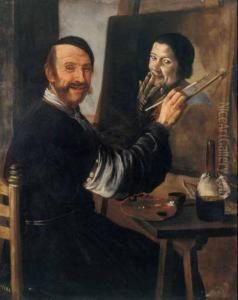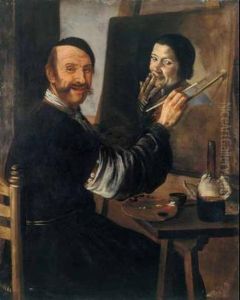Sebastianone Paintings
Sebastiano del Piombo, born Sebastiano Luciani in 1485 in Venice, Italy, was a notable Italian Renaissance painter who merged the rich colors typical of the Venetian school with the monumental forms of the Roman school. Despite the name 'Sebastianone' sometimes being affectionately used to refer to him due to his large-scale works, he is most commonly known as Sebastiano del Piombo, a moniker derived from his appointment to the position of Keeper of the Seal (piombo) by the Pope, which involved the use of lead (piombo in Italian) seals.
Sebastiano began his artistic journey in the vibrant city of Venice, initially influenced by Giovanni Bellini and Giorgione. His early works are characterized by their vibrant colors and sensitive treatment of light, elements that were to remain constant throughout his career. His move to Rome in 1511 marked a turning point in his artistic direction, largely due to his encounter with Michelangelo. The friendship that developed between Sebastiano and Michelangelo had a profound impact on Sebastiano's work; Michelangelo's powerful figures and anatomical precision complemented Sebastiano's coloristic and compositional talents, leading to a fruitful collaboration between the two artists.
During his time in Rome, Sebastiano del Piombo undertook various important commissions, including the decoration of the Borgherini Chapel in the church of San Pietro in Montorio and the creation of the 'Pietà' for the church of San Francesco in Viterbo, works that showcased his ability to blend emotional depth with technical mastery. His most famous work, however, is perhaps the 'Raising of Lazarus', now in the National Gallery, London. This painting was part of a competition with Raphael and is a testament to Sebastiano's skill in handling complex compositions and his ability to convey dramatic intensity.
Despite his success, Sebastiano's later years were marked by a gradual withdrawal from painting, as his duties as Keeper of the Seal took precedence. Nevertheless, his legacy as an artist who successfully bridged the Venetian and Roman traditions remains significant. Sebastiano del Piombo died in Rome in 1547, leaving behind a body of work that continues to be admired for its emotional depth, vibrant color, and technical innovation.

